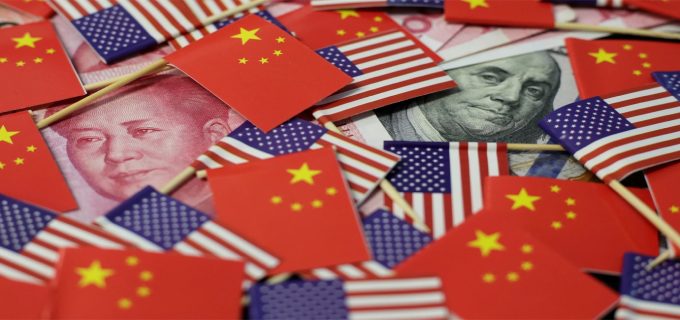The coronavirus (COVID-19) emerged in China last December at the height of the trade competition and mutual sanctions between China and the US, specifically in the Wuhan Province – the largest industrial stronghold in China. This caused a significant decline in production and the cessation of many factories and traffic as a result of the measures the authorities imposed in an attempt to limit the spread of the disease and reduce losses. However, they failed to contain it, leading to the spread of the virus to most countries of the world. As of midday, March 21, 2020, the numbers of those afflicted with COVID-19 exceeded a quarter of a million globally, including the US, Europe, and the Arab region and its neighbours, with the number of deaths reaching 11,842; 284,724 infected; and 93,576 fully recovering. Moreover, COVID-19 has caused a widespread psychological state of panic and anxiety, as well as a paralysis in movements, transportation and navigation. It has also resulted in the suspension of studies across all educational facilities; the closure of borders of many countries; and the imposition of curfews and banning of gatherings. Indeed, the World Health Organization classified this as a global pandemic.
On February 3, 2020, the Chinese government accused the US of overreacting to the outbreak and fuelling panic. China has also denounced US President Donald Trump’s insistence on naming the coronavirus as the “Chinese virus”. Meanwhile, the US denies these accusations, including those that were mentioned by the Chinese Foreign Ministry spokesman, Zhao Lijian, in a Tweet and reported by Reuters, where he accused the US military of bringing the coronavirus to Wuhan, the city most affected by this virus.
This assessment examines the impact of the outbreak of the virus on the economies of both China and the US, as they are the largest in the world; as well as its effects in escalating the conflict between the two countries; and what implications lie ahead for the global economy as a whole.
The economic escalation and the impact of the virus
Over the past three decades, China’s economy has continued to achieve elevated growth rates, particularly in the past two decades. This has enabled China to occupy the rank of the world’s second largest economy. China diversified its economic policies by adopting the Belt and Road Initiative (BRI) development strategy. This strategy includes several structures, including the trading structure through which China wishes to maintain its export position on a global level; and the cash structure through which it strives to increase trade in Chinese currency to ensure a reduction in the cost of trade and reduce the risks of exchange rate fluctuations for its companies against other currencies; and the geopolitical structure, as China aims through this strategy to expand exports through the belt (land borders) and road (maritime borders). This signifies that China’s strategy is not limited to the economic dimension, but has political dimensions that may work to create new alliances worldwide.
The US has been examining China’s economic moves with trepidation, particularly since their economic dynamism has grown steadily despite global economic crises. Successive Washington administrations have been alerted to the growth of China’s economy from an early age, but practical steps to delay and slow its growth process were only enacted during Donald Trump’s term. Trump imposed $50 billion in customs duties on Chinese goods under Article 301 of the Trade Act of 1974 which relates to unfair business practices and intellectual property theft. In return, China imposed custom duty tariffs on more than 128 US products, including aluminium, aircraft, cars, pork, soybeans, fruits, nuts and steel.
In response to China’s actions, Washington imposed an additional fee of 25% on both aircraft and cars imported from China, in addition to a further $100 billion in customs duties on April 5, 2018. As a result of the continued trade rifts between the two countries, in April 2018, the International Monetary Fund (IMF) reduced its global growth forecast for 2019 to 3.3%, compared to 3.5%.
On January 15, 2020, the two parties signed Phase One Economic and Trade Agreement that comprised measures on intellectual property rights, technology transfer, food and agriculture, financial services, macroeconomic policies and exchange rate matters, expanding trade, mutual evaluation and dispute resolution. Moreover, China pledged to purchase additional US goods worth $200 billion over the next two years, including American agricultural products; maintain the stability of its currency; and open financial service markets to US companies. In exchange, the US would abolish customs duties imposed on its goods, including a reduction of tariffs on smart phones – 16%, compared to the previously imposed 25%.
According to reports, the implications of the spread of COVID-19 worldwide may rescind the results achieved from this agreement, particularly since important sectors included in the agreement, such as agriculture and export, were ceased within the measures taken to reduce the spread of the virus. China’s concerns lay in the cessation of export movement between it and Washington and other countries since Beijing relies mainly on the export of goods abroad, which constitute the backbone of the economy. With the spread of this disease and the possibility of spreading it beyond China’s borders, a diminishment in exports, especially to Washington, was inevitable. Indeed, due to quarantine measures and fears of the repercussions of the spread of the virus, the trade agreement between the two countries will be damaged, and a shadow will be cast over the economy, globally.
The impact of COVID-19 on the Chinese economy
Although China faced a pre-epidemic challenge in 2003 in the SARS crisis, the implications of COVID-19 on its economy was different. For indeed, China was not as influential in the global economy in 2003 as it is in 2020. China’s economy has experienced remarkable advances in recent years: in 2000, China’s GDP exceeded its Italian counterpart; in 2005 it surpassed its French counterpart; in 2007 it surpassed the UK; and in 2009 it surpassed Japan, stabilising thereafter as the second largest economy in the world after the US.
Although China was quick to implement strict measures to reduce the spread of the coronavirus, it was not able to avoid the economic damage caused by the application of these measures. Vital economic sectors were affected, most notably the tourism and aviation sectors. Furthermore, due to its association with global markets in manufacture and export, the spread of the virus and the suspension of all imports and exports impacted the economic growth significantly. Many experts believe that the outbreak could lead to a decline in China’s GDP by approximately 1.2%. In 2018, China’s GDP was estimated at about $13.6 trillion, representing 15.8% of the global total GDP.
Many reports indicate that the spread of COVID-19 will have a major impact on global economy. Consequently, IMF reduced its forecast for China’s economic growth to 4% compared to 5.6% in its previous forecast for the first quarter of this year. Moreover, Oxford Economics predict that China’s growth will decrease to 5.4% during 2020, which is its lowest since 1990.
The impact of COVID-19 on the US economy
According to the US Department of Treasury, the federal budget deficit for the fiscal year 2019 up to September was approximately $984 billion; equivalent to 4.6% of total GDP. The latter was the largest deficit since 2012 when deficit reached $1,100 billion during former President Barack Obama’s era; this was when the leading world economy was emerging from the financial crisis and the great deflation. Despite the punitive tariff policies imposed on Chinese goods under the Trump administration’s commercial confrontation with Beijing, record returns of $30 billion have been achieved – an increase of 70% over normal conditions; the deficit increased an additional $205 billion compared to 2018.
Imports saw a record increase of 4%, amounting to $3,462 billion. But the pace of increased expenditures was twice that, at 8%, amounting to $4,447 billion – also an unprecedented figure. The US Treasury attributed the rise in expenditures to an aging population, with high pension salaries (6%), and health insurance expenditures (8%) for the poorest and the oldest citizens.
Larry Kudlow, an economic adviser to the White House, notes that the outbreak of COVID-19 in China may reduce US GDP in the first quarter by 0.2-0.3%. Moreover, according to the report of the United Nations Conference on Trade and Development (UNCTAD), COVID-19 has caused a 2% reduction in China’s production, which has affected the overall flow of global economy, and as a result, the losses of the US have amounted to approximately $5.8 billion during the month of February alone.
Global indicators imposed by COVID-19
Although the ongoing economic struggle between the US and China has cast a shadow over the global economy as a whole, it appears that the effects of the coronavirus pandemic will be the most difficult challenge facing the global economy in the coming phase. Indeed, the UNCTAD report notes that the crisis caused by the pandemic will lead to a global economic recession which will cause a decline in global annual growth by 2.5% for this year. The situation may worsen to the point of recording a deficit in the global income of $2,000 billion, which would mean the collapse of the global economy. This would be similar to the great recession that followed the economic crisis of 1929 in which every country, without exception, was impacted by the crisis. The current situation is particularly pertinent as the global economy has not yet recovered from the effects of the financial crisis of 2008, which occurred as a result of the financial fragility of the global economic system.
As a result of the quarantine measures taken to combat the outbreak of the virus, economic sectors have been severely affected, especially the aviation, tourism, stock and oil markets. According to the UNCTAD report, China’s exports of vital parts and components for products ranging from automobiles to smart phones are estimated to have shrunk by 2% in February, costing other countries and their industries $50 billion. Indeed, as a result of the outbreak of the virus in China, which accounts for 20% of global trade in intermediate products, 75 countries have been affected. The highest export losses due to this disruption was in the EU, with a loss of nearly $15.6 billion, while Japan was affected by $5.2 billion, South Korea by $3.8 billion, Taiwan by $2.7 billion, and Vietnam by $2.3 billion.
Conclusion
The coronavirus has not only affected China’s economy and health, but has spilled over the borders, becoming a global pandemic whose victims have exceeded a quarter of a million people, and causing up to 12,000 deaths as of March 21. At an economic level, it has caused losses estimated to be in the hundreds of billions according to preliminary estimates. China’s economy appears to be the most afflicted by the coronavirus as a result of the strict measures that were taken to combat it; as well as China’s inability to directly benefit from the outputs of Phase One of the Economic and Trade Agreement between it and the US; and the knock its reputation has received, which will take time to restore.
However, according to recent reports, the strict measures taken by China to combat the virus, in addition to providing medical assistance and sending experts to affected countries, such as Serbia and Italy, may enable China to turn its economic disaster into a political opportunity to compete with the US, which has failed – for the first time – to play an international role on the humanitarian relief aspect, similar to its role during the SARS and Ebola outbreaks.
Whatever the effects and repercussions of COVID-19, the economic competition between the two countries will certainly not cease. However, the high cost the two parties will pay may lead them to agree on mechanisms that guarantee the recovery of the economic sector in order to compensate for the effects left by the spread of the virus, before returning to their economic competition once it’s all over.







